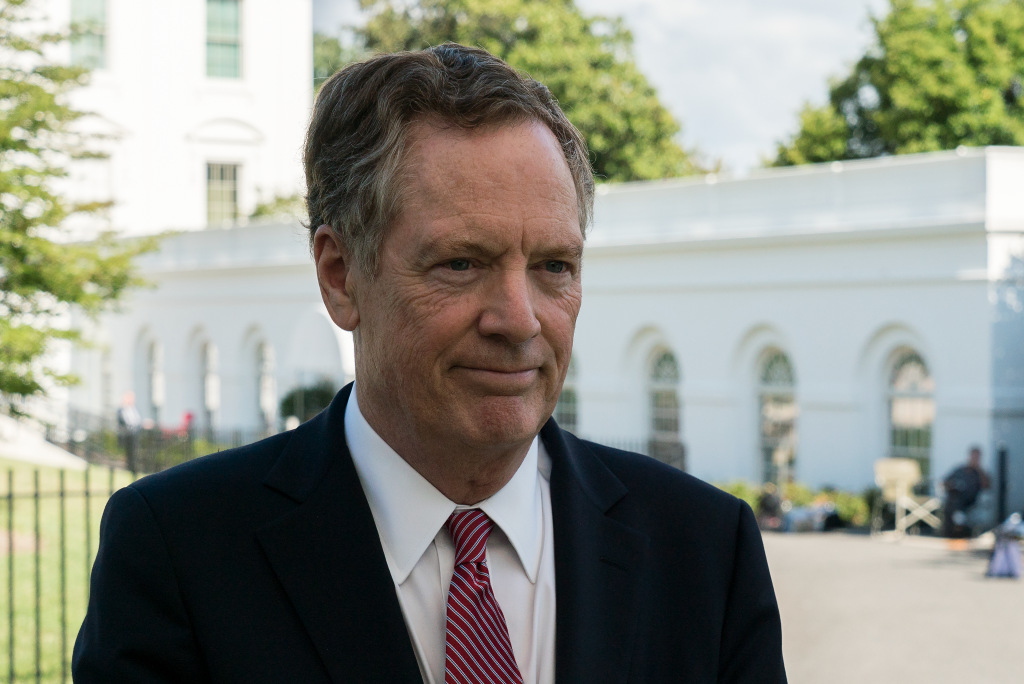
Autos and currency are part of the newly announced agreement — as is steel.
We have a deal!

The United States and South Korea officially announced on Wednesday an agreement on a new trade pact. It’s the first significant trade deal for the Trump administration, and tackles key issues between the two countries, including increased market access for American autos and an agreement designed to ensure neither nation devalues its currency to gain an unfair advantage.
Perhaps the most notable part of the agreement is on steel, as it curbs South Korea’s steel exports to the United States to 70 percent of its most recent three-year average. That means that South Korea will be exempt from the 25 percent tariff on imported steel that went into effect last week.
But that doesn’t mean that South Korea gets a free pass on steel, either, as the South Koreans have agreed to cut their steel shipments by 30 percent.
“This is very, very important to American steelmakers,” U.S. Trade representative Robert Lighthizer, who led negotiations between the two nations, told CNBC. “A lot of people believe, and I think I agree with them, that Korea is part of the problem on steel. They import a lot of Chinese steel, and export a lot of steel to the United States.”
Indeed, American manufacturers of steel pipe and tube products have been especially hurt by South Korean imports in recent years. South Korea does not need these products, known as Oil Country Tubular Goods (OCTG) for its own use. But it continued to make them and dump them into the U.S. market at prices far below fair market value, leading to layoffs and plant closures in the United States.
South Korea also serves as a transit point for many Chinese steel products — and as we’ve explained many times before, China's steel industry is at the heart of the global steel overcapacity crisis.
The cap on South Korea steel imports will help “provide meaningful and lasting relief” for American steelworkers and producers, United Steelworkers President Leo Gerard said in a statement. Tom Conway, USW International Vice President, echoed Gerard.
“The specific reductions in this agreement will help restore market-based prices and contribute to renewed production and jobs here in the United States,” Conway said. “Many of these products are essential to our energy independence and our national security.”
On the Global Front
As Matt noted on Tuesday, other countries also are stepping up their game when it comes to addressing the global steel glut. Canadian Prime Minister Justin Trudeau said that his nation will act to prevent the smuggling of cheap steel into the North American market, which is important since many bad actors are likely to try and skirt the U.S. tariff by shipping products through Canada (which received an exemption).
Meanwhile, the European Union — which also received an exemption from the steel tariffs but is still real mad at Trump over the whole thing — will now monitor whether dumped steel products from places like China are making it into the European market.
Politico on Wednesday, in a particularly snarky manner, noted that Trump’s steel strategy seems to be working. Here’s more:
“Despite protestations that the EU won’t be strong-armed into doing Trump’s bidding, Brussels has given indications that it is ready to work with his game plan, particularly in cracking down on China’s overproduction of highly subsidized steel. After years of treading ultra cautiously with Beijing, Brussels suggested this week that it would consider stronger action in line with the Trump administration’s wish list.”
It's worth noting the Europeans aren’t inclined to cooperate with Trump on additional trade issues, with EU trade chief Cecilia Malmström even telling the European Parliament that “we are not negotiating under threat, we are not negotiating under menace.”
So the fact that the Europeans are upping their game on the steel front showcases a basic truth behind the steel crisis — that it is a global crisis requiring global cooperation to solve. China, as noted above, is at the heart of it, but other bad actors like Russia and Turkey also must be held accountable. Ensuring this happens will require the cooperation of countries around the world that are dedicated to finally solving this problem.
“Our trade partners must acknowledge that country exemptions from steel tariffs are not blank checks,” said AAM’s president Scott Paul. “National governments must be active partners in efforts to eliminate overcapacity, prevent circumvention and transshipment, and punish trade cheaters that dump and subsidize.”
Time will tell whether the Trump administration’s strategy will be effective in the long run. We’ll be watching closely, and hope that the United States and its trading partners will rally together to level the playing field for workers and companies that play by the rules.
